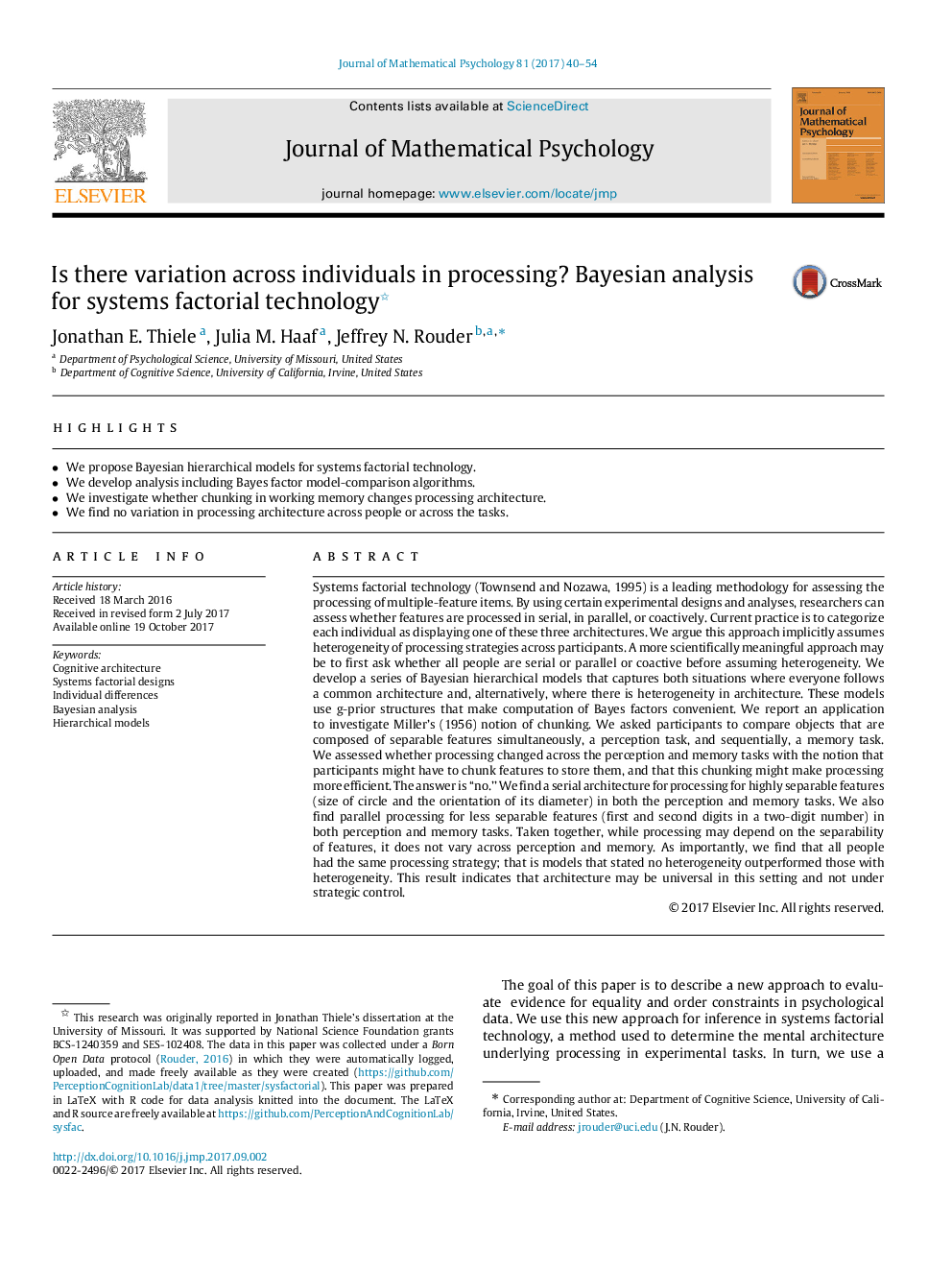| کد مقاله | کد نشریه | سال انتشار | مقاله انگلیسی | نسخه تمام متن |
|---|---|---|---|---|
| 6799259 | 1433258 | 2017 | 15 صفحه PDF | دانلود رایگان |
عنوان انگلیسی مقاله ISI
Is there variation across individuals in processing? Bayesian analysis for systems factorial technology
ترجمه فارسی عنوان
آیا تغییر در افراد در پردازش وجود دارد؟ تجزیه و تحلیل بیزی برای تکنولوژی فاکتوریل سیستم
دانلود مقاله + سفارش ترجمه
دانلود مقاله ISI انگلیسی
رایگان برای ایرانیان
کلمات کلیدی
معماری شناختی، طرح های فاکتوریل سیستم، تفاوتهای فردی، تجزیه و تحلیل بیزی، مدل های سلسله مراتبی،
موضوعات مرتبط
مهندسی و علوم پایه
ریاضیات
ریاضیات کاربردی
چکیده انگلیسی
Systems factorial technology (Townsend and Nozawa, 1995) is a leading methodology for assessing the processing of multiple-feature items. By using certain experimental designs and analyses, researchers can assess whether features are processed in serial, in parallel, or coactively. Current practice is to categorize each individual as displaying one of these three architectures. We argue this approach implicitly assumes heterogeneity of processing strategies across participants. A more scientifically meaningful approach may be to first ask whether all people are serial or parallel or coactive before assuming heterogeneity. We develop a series of Bayesian hierarchical models that captures both situations where everyone follows a common architecture and, alternatively, where there is heterogeneity in architecture. These models use g-prior structures that make computation of Bayes factors convenient. We report an application to investigate Miller's (1956) notion of chunking. We asked participants to compare objects that are composed of separable features simultaneously, a perception task, and sequentially, a memory task. We assessed whether processing changed across the perception and memory tasks with the notion that participants might have to chunk features to store them, and that this chunking might make processing more efficient. The answer is “no.” We find a serial architecture for processing for highly separable features (size of circle and the orientation of its diameter) in both the perception and memory tasks. We also find parallel processing for less separable features (first and second digits in a two-digit number) in both perception and memory tasks. Taken together, while processing may depend on the separability of features, it does not vary across perception and memory. As importantly, we find that all people had the same processing strategy; that is models that stated no heterogeneity outperformed those with heterogeneity. This result indicates that architecture may be universal in this setting and not under strategic control.
ناشر
Database: Elsevier - ScienceDirect (ساینس دایرکت)
Journal: Journal of Mathematical Psychology - Volume 81, December 2017, Pages 40-54
Journal: Journal of Mathematical Psychology - Volume 81, December 2017, Pages 40-54
نویسندگان
Jonathan E. Thiele, Julia M. Haaf, Jeffrey N. Rouder,
